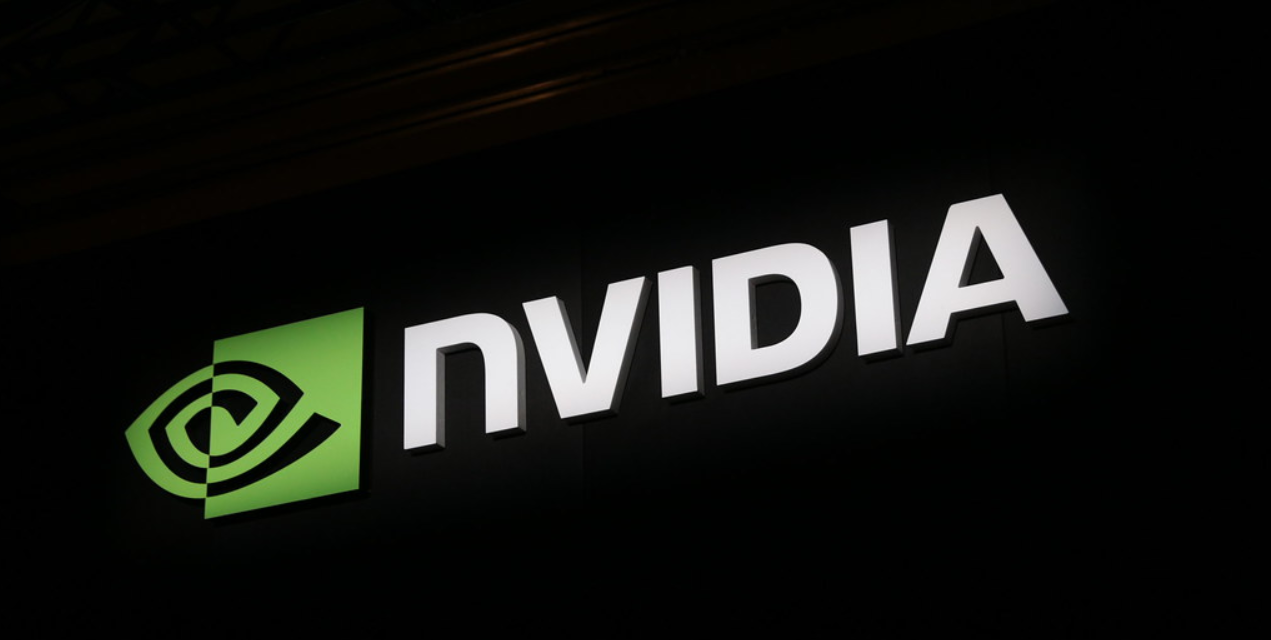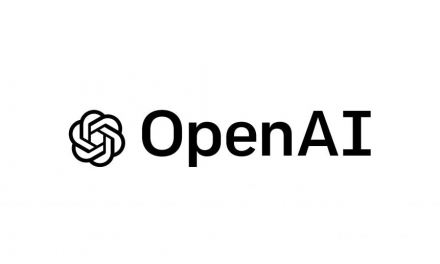In the wake of last year’s tumultuous market decline in the realm of tech stocks, all major players within the industry have staged remarkable comebacks in the year 2023. However, one company has soared above the rest in a blaze of glory: Nvidia.
Bolstered by its extensive lead of over a decade in the domain of coveted artificial intelligence chips and software that has captured the attention of Silicon Valley, Nvidia’s stock has surged by a staggering 180% this year, triumphing over every other constituent of the S&P 500 index. Following this triumphant ascent, the next in line for gains within the index is Meta, the parent company of Facebook, boasting a substantial 151% increase in value, as of Friday’s market close.
With its newfound valuation exceeding $1 trillion, Nvidia now claims the position of the fifth most valuable U.S. corporation. This impressive rank places it behind only the tech titans Amazon, Apple, Microsoft, and Alphabet.
Despite not possessing the same level of household recognition as its mega-cap tech counterparts, Nvidia’s underlying technology serves as the bedrock for a cutting-edge innovation poised to disrupt domains ranging from education and media to finance and customer service. This innovation takes the form of none other than ChatGPT.
Leveraging Nvidia’s graphic processing units (GPUs), OpenAI’s widely acclaimed chatbot and the AI models hailing from several well-funded startups owe their functionality to this technology. Nvidia’s GPUs are widely regarded as the premier choice for training AI models, and the company’s financial predictions point to an insatiable demand for these GPUs.
The price tag for Nvidia’s potent H100 chips hovers around $40,000, a sum that Microsoft and OpenAI have eagerly paid thousands of times over to acquire these hardware gems.
In the words of Piper Sandler analyst Harsh Kumar, “In brief, Nvidia possesses the crème de la crème of GPUs, and they are available today.”
Notwithstanding this impressive momentum and the seemingly boundless demand, Nvidia’s stock price carries a set of assumptions about its growth that underpin its current valuation. These assumptions include expectations of doubling sales in the upcoming quarters and nearly quadrupling net income within the current fiscal year.
Some investors have characterized Nvidia’s stock as being priced for an almost unattainable level of perfection. Over the past 12 months, Nvidia’s price-to-earnings (P/E) ratio stands at an astounding 220, which is remarkably high even in comparison to tech giants renowned for their lofty valuations. As a point of reference, Amazon boasts a P/E ratio of 110, while Tesla’s stands at 70, as per FactSet data.
Should Nvidia meet the forecasts set by analysts, the present stock price appears somewhat elevated when compared to the majority of the tech sector, yet still relatively sensible. According to FactSet data, Nvidia’s P/E ratio for the next 12 months of earnings stands at 42, as opposed to Amazon’s 51 and Tesla’s 58.
In anticipation of Nvidia’s forthcoming earnings report later this month, industry experts anticipate quarterly revenue to reach $11.08 billion, as per Refinitiv estimates. This projection represents a substantial 65% rise from the previous year, slightly surpassing Nvidia’s official guidance of approximately $11 billion.
Investors are placing their bets not only on the immediate quarter and the subsequent one but are also wagering on Nvidia’s enduring capacity to ride the wave of AI for an extended period. This optimism also encompasses the company’s ability to navigate the burgeoning competition from the likes of Google and AMD, all while averting any significant supply constraints.
However, the exhilarating ascent of any stock comes with its share of risks. Nvidia’s stock witnessed an 8.6% decline over the course of a week, in stark contrast to the Nasdaq’s 1.9% drop. Intriguingly, there were no unfavorable developments that could have justified such a pronounced retreat. This week’s decrease constitutes the most significant weekly decline for Nvidia’s stock since September of the prior year.
Christopher Gannatti, an analyst at WisdomTree, aptly captures the quandary faced by investors: “As investors, we have to start wondering if the excitement around all the great things that Nvidia has done and may continue to do is baked into this performance already. High investor expectations are one of the toughest hurdles for companies to overcome.”
Unveiling the Journey of Nvidia
Nvidia’s astounding stock surge in the current year is indeed remarkable, yet it’s the decade-long trajectory that truly dazzles. A mere ten years ago, Nvidia commanded a market valuation of approximately $8.4 billion, a minute fraction of the market cap held by chip giant Intel.
Fast forward to the present, and while Intel’s stock has appreciated by 55%, Nvidia’s valuation has skyrocketed by over 11,170%, catapulting it to a valuation seven times that of its competitor. Tesla, whose stock surge during this interval propelled CEO Elon Musk to the status of the world’s wealthiest individual, experienced a surge of 2,279%.
Nvidia’s founder and CEO, Jensen Huang, has seen his net worth surge to $38 billion, securing him the 33rd position on the prestigious Bloomberg Billionaires index.
An Nvidia spokesperson declined to provide comments for this narrative.
Before the AI revolution, Nvidia was renowned for its contributions to video game technology. The company’s origin story reportedly traces back to a Denny’s restaurant in San Jose, California, in 1993. It was there that they developed processors pivotal for rendering intricate graphics in computer games, with their iconic product being none other than the graphics card—chips and boards that were integrated into consumer PCs and laptops.
Video games remain a cornerstone of Nvidia’s business. In fiscal 2023, the company reported gaming sales exceeding $9 billion. However, this figure represents a 27% decline on an annual basis, largely attributed to the substantial surge in graphics card sales during the early stages of the pandemic when individuals were upgrading their home systems. Consequently, Nvidia’s core gaming segment continues to contract.
What truly captivates Wall Street’s imagination, however, transcends the realm of gaming. It’s the burgeoning AI business nestled under Nvidia’s data center division. This unit witnessed a robust 41% growth last year, surging to $15 billion, eclipsing the gaming sector. Analysts surveyed by FactSet anticipate a doubling of this figure to reach $31.27 billion in fiscal 2024. Dominating the AI chip market, Nvidia commands a staggering 80% or more of the sector, as per analysts’ estimates.
Nvidia’s strategic shift toward AI chips has a lineage spanning 15 years. In 2007, the company introduced CUDA, a programming language and software package that enabled programmers to leverage the full spectrum of a GPU’s hardware capabilities. This software quickly gained traction for training and executing AI models. Today, CUDA forms an integral part of the AI model training process.
When AI companies and developers employ Nvidia’s GPUs along with CUDA to construct their models, they are less inclined to switch to competing offerings such as AMD’s chips or Google’s Tensor Processing Units (TPUs).
Patrick Moorhead, a semiconductor analyst at Moor Insights, aptly describes Nvidia’s commanding position, stating, “Nvidia has a dual moat at present. They boast the highest performance training hardware. Furthermore, in the realm of AI software, there exist libraries and CUDA.”
To fortify its position and live up to the towering expectations, Nvidia has taken strategic steps. In June, Nvidia’s CEO Jensen Huang had dinner with Morris Chang, the chairman of Taiwan Semiconductor Manufacturing Co. (TSMC). TSMC, a leading chip manufacturer for semiconductor companies, is responsible for producing Nvidia’s crucial products. Following the dinner, Huang expressed confidence in the partnership, affirming that Nvidia could rely on TSMC’s foundry services, implying a secure supply chain.
Moreover, Nvidia has emerged as a substantial investor in the realm of startups, focusing primarily on companies operating in tandem with AI models. In 2023 alone, Nvidia has invested in a minimum of 12 startups, as per Pitchbook data. This roster includes some of the most prominent AI ventures. Among them is Runway, a company specializing in AI-powered video editing, Inflection AI, founded by a former DeepMind executive, and CoreWeave, a cloud provider offering access to Nvidia GPUs.
This strategic investment drive could potentially furnish Nvidia with a burgeoning customer base. These customers have the potential to not only drive future sales but also diversify Nvidia’s client portfolio for its GPUs.
Several startups have unveiled impressive numbers, underscoring the remarkable demand for Nvidia’s technology. Piper Sandler’s Kumar cites insights from CoreWeave’s leadership, indicating that the company achieved $30 million in revenue the previous year and has already secured $2 billion in contracted business for the following year.
Kumar summarizes, “This reflects the demand for applications such as generative AI, voice-search, and GPU applications in general.”
Nearing the midpoint of its present GPU architecture cycle, Nvidia is poised at an intriguing juncture. The cutting-edge H100 AI chip, a pinnacle of Nvidia’s Hopper architecture, has already materialized. With the Hopper architecture introduced in March 2022, Nvidia anticipates the unveiling of its successor in 2024.
Prominent cloud providers, including Google, Microsoft, and Amazon, have unveiled substantial investment plans to expand their data centers, with Nvidia GPUs constituting a crucial component of these endeavors.
At present, Nvidia is rapidly selling its available stock of H100 chips, with industry participants frequently voicing challenges in securing access to GPUs following the launch of ChatGPT in the previous year.
Addressing this transformative moment, Jensen Huang aptly remarked at the company’s annual shareholder meeting in June, “ChatGPT marked the AI equivalent of the iPhone moment. It all coalesced into an intuitive user interface that resonated with everyone. Yet, we have merely glimpsed its full potential. Generative AI has inaugurated a new era of computing, rivaling the transformative impact of the internet.”
Investors have embraced this narrative, yet the volatile trading witnessed this week underscores their readiness to respond swiftly to any hiccups that the company or the market might encounter.





